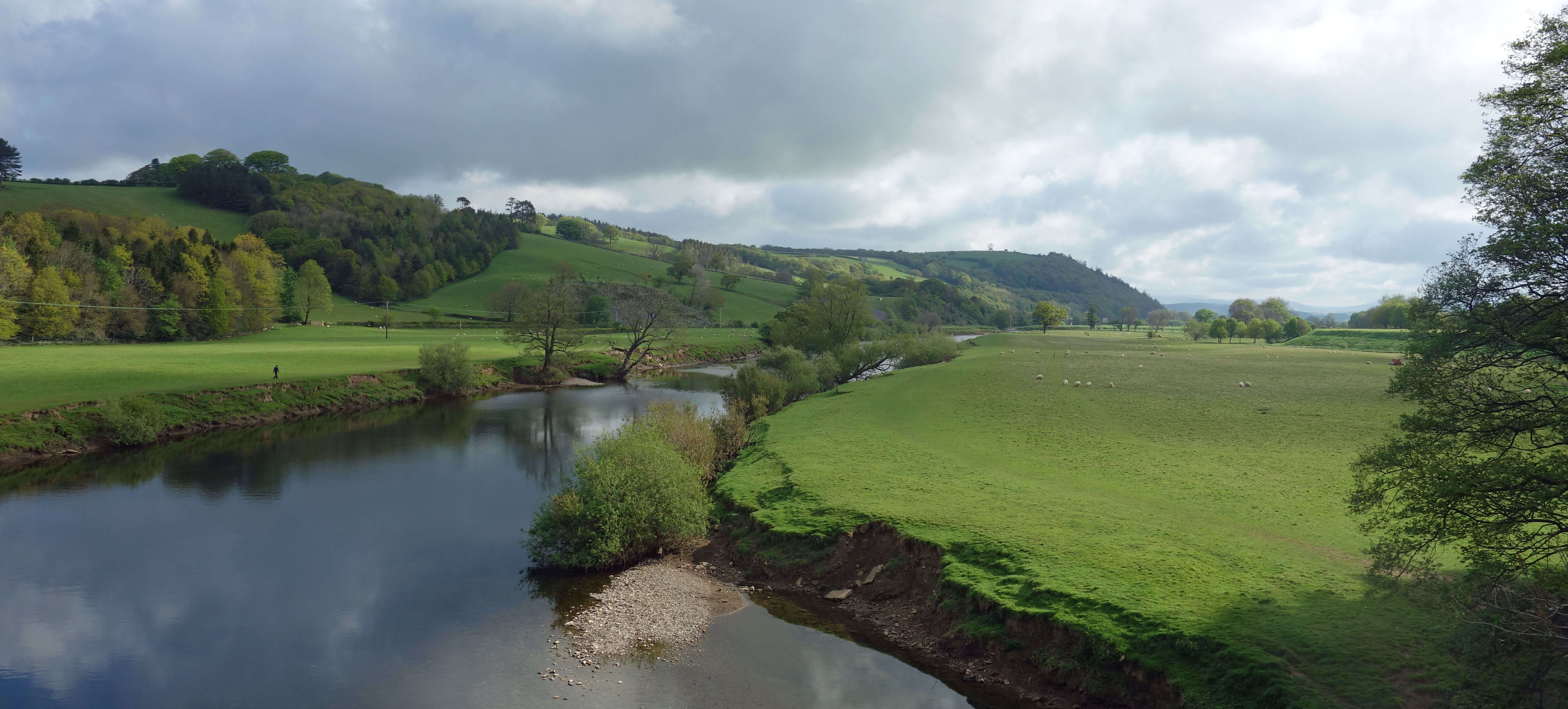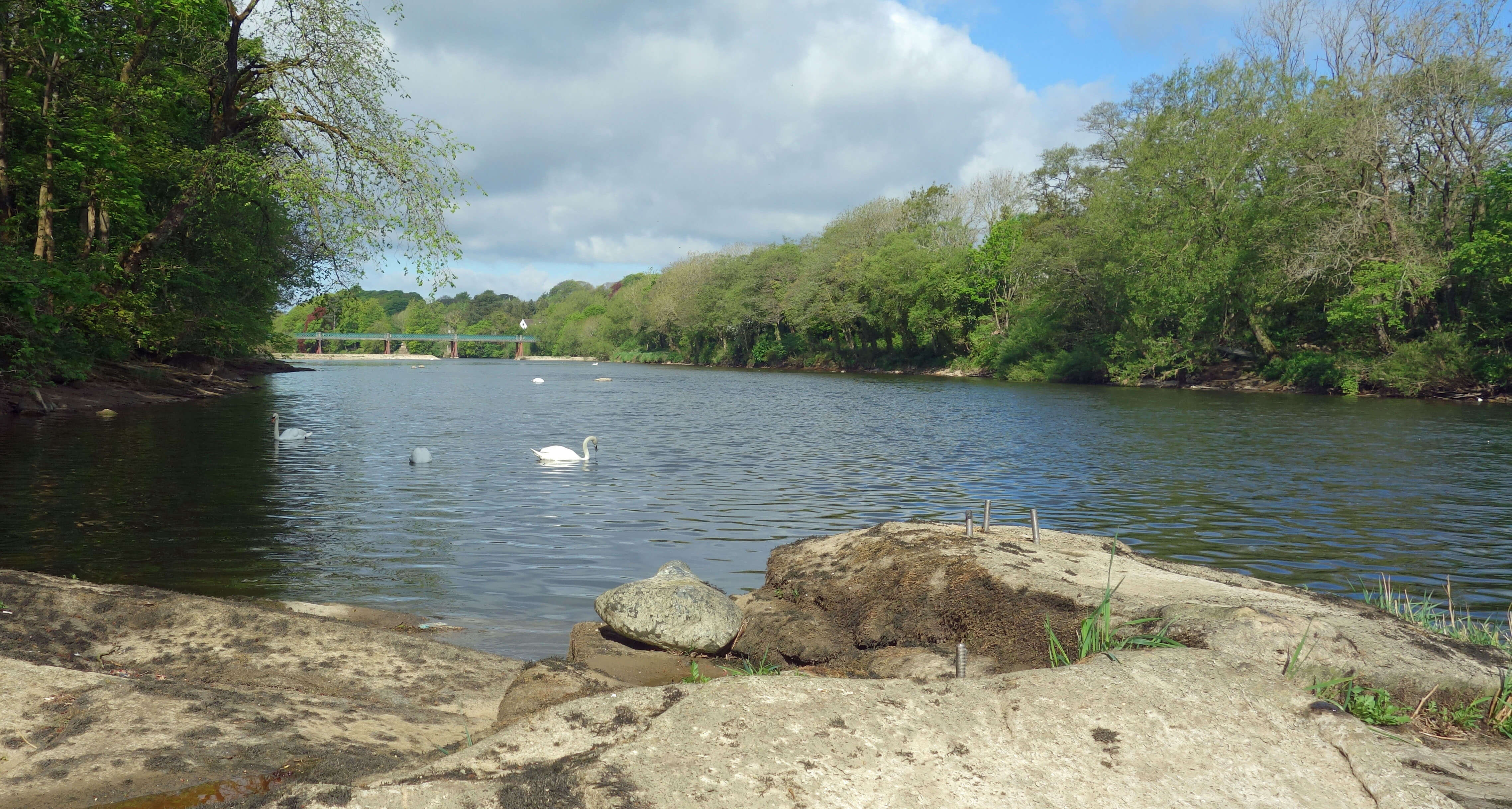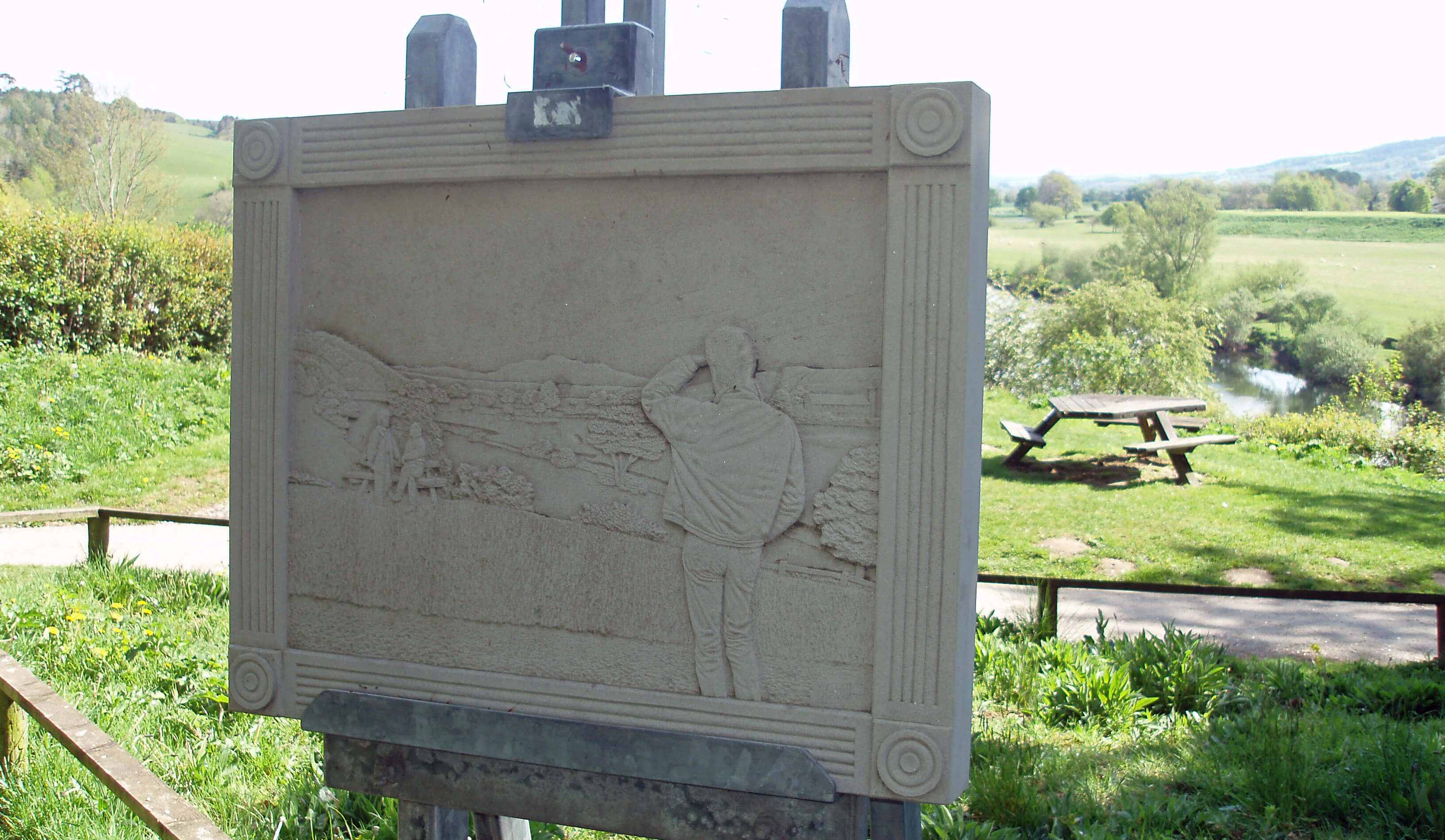
Home
Preamble
Index
Areas
Map
References
Me
Drakkar
Saunterings: Walking in North-West England
Saunterings is a set of reflections based upon walks around the counties of Cumbria, Lancashire and
North Yorkshire in North-West England
(as defined in the Preamble).
Here is a list of all Saunterings so far.
If you'd like to give a comment, correction or update (all are very welcome) or to
be notified by email when a new item is posted - please send an email to johnselfdrakkar@gmail.com.
This is one of several relatively short items about local walks during the first
coronavirus lockdown, April - May 2020.
88. The Lune Millennium Park Artworks
When we visited Gray’s Seat (Sauntering 83)
we were disappointed to see that the fine carved, curved bench was rather
weathered. So to motivate our walk along the old railway line to the bridge at Denny Beck we set out to
look at the state of the other artworks installed in 2000. The railway line path, which was christened
the River Lune Millennium Park in 2000, runs for 10 miles between Salt Ayre and east of Bull Beck. This so-called
Park is probably the narrowest park in England. They didn’t anticipate the 2-metre apart requirement.
The first artwork encountered is actually one of a set of three, the ‘Maybe’ of ‘Was, Is, Maybe’ by
Colin Wilbourn
(I am adding a link to the artists’ current webpages in case you’re interested in their subsequent work).
The three pieces are carved stone pictures on easels of the scene ahead. In its shady location, Maybe has
become somewhat overcome with mould. We walked on to the Crook o’Lune, keeping away from the many dogs and,
especially, their owners.

The Lune at the Crook o'Lune
The next artwork is the one at Gray’s Seat and requires leaving the Millennium Park (as we did in
Sauntering 83).
The bench was created by
Jim Partridge and Liz Walmsley.
It is a shame that this excellent structure was placed
in such an out-of-the-way location, where very few people would ever have sat upon it. It is now, it seems, on
an inevitable path to ruin, in this damp, gloomy spot. There is, in fact, a second artwork at Gray’s Seat, a
series of stone slabs (by Alan Ward) that have Gray’s quote engraved upon them. These, of course, will not decay.
Perhaps when the Seat is abandoned they could be moved to where they might be better appreciated.
Next on the Millennium Park is the Heron’s Head, which is easily missed because it is above a small tunnel
and not seen clearly against the background of trees. It is made of wrought iron and remains in good condition.
I rather like the fitting simplicity of this work - but then I rather like herons.
The artist was
Marjan Wouda,
who has gone on to establish a reputation for her clay sculptures, mainly of animals.

The Heron's Head
Further on we come to the site of the most controversial of the Millennium Park artworks, the Upside Down
Trees by
Giles Kent. As the title tells us, these were a set of trees (larch, in fact) that
were inserted in the ground with
their trunks upside down and roots aloft. They were immediately the subject of derision, one person feeling so
irate at their absurd spoiling of the setting that he or she set about them with a chain-saw in 2001. They rotted
quickly enough for the Council to deem them a hazard in 2012 and use a chain-saw themselves. Nobody mourned, not
even Giles Kent, I suspect, after all the angst.

The Upside Down Trees in their prime
Nearby is an artwork that provoked no controversy because most people did not realise that it was an
artwork. A set of Flowing Benches – wavy seats mimicking the Lune – were placed just where people might expect a
seat. They, too, being of wood, have begun to deteriorate. It was the first commission for the artist
Georgina Ettridge, who has
since gone on to specialise in “handmade bespoke award winning nature and leaf inspired artisan jewellery”.
Next is, or almost was, the River Rocks by
Colin Reid. These were a set of three glass ovoid ‘rocks’ fixed to
the rocky edge of the Lune. As with much art placed in a natural setting, I was unsure what these anomalous
objects added, other than perhaps to prompt us to reflect upon that already fine setting. They
survived for longer than I expected but two of the rocks have disappeared now, presumably washed away in some flood.
The third remains but is easily missed as its glassy sheen is now mud-covered.

The remains of the River Rocks (the remaining River Rock has the
pegs for the other two to the right)
At the old Halton railway station is the second, ‘Was’, of Wilbourn’s three. This one is mould-free: somebody
must be scrubbing it from time to time. From here, we walked over the bridge to return on the other side of the
Lune through the new houses of Halton Mill and along the narrow path above the Lune where, luckily, we met nobody
coming the other way. The third of the Wilbourn set, ‘Is’, is at the Crook o’Lune picnic spot, overlooking the
scene shown in
Sauntering 83. But who admires a sculpture depicting the scene ahead when they are at the precise spot where they can
admire the real thing?

Is
Date: May 2nd 2020
Start: SD543644, Brookhouse (Map: OL41)
Route: NW across A683 – old railway line – W – bridge near Denny Beck
– N, E, SE – Crook o'Lune – E on old railway line – SE – Brookhouse
Distance: 6 miles; Ascent: 40 metres
Home
Preamble
Index
Areas
Map
References
Me
Drakkar
© John Self, Drakkar Press, 2018-

Top photo: The western Howgills from Dillicar;
Bottom photo: Blencathra from Great Mell Fell







